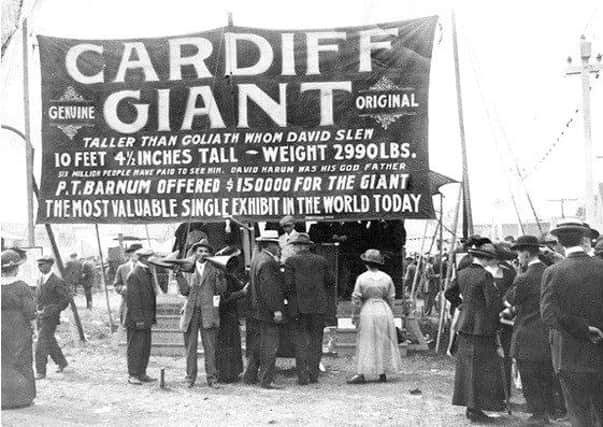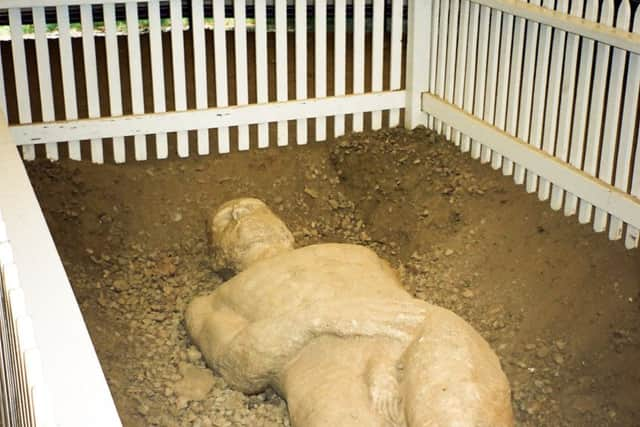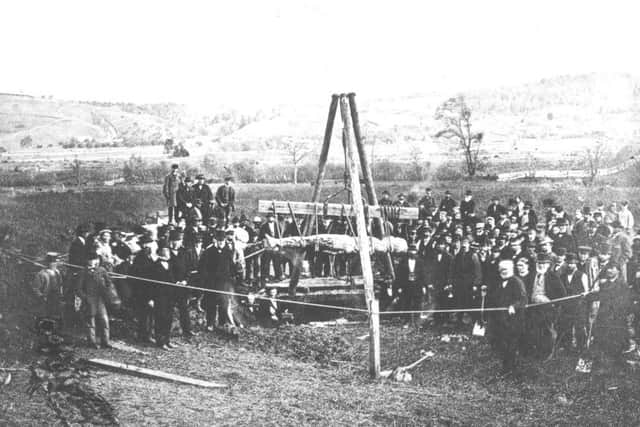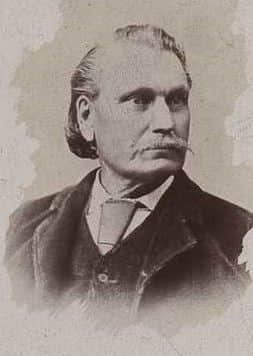America's greatest hoaxer was a banished Irishman fraudster


The note from regular-contributor Ballycastle-born Mitchell Smyth, a fellow-journalist now resident in Canada, quickly lessened Roamer’s current nervousness with American politics by explaining: “I’ve written about the Cardiff Giant a couple of times but didn’t know there was an Irish connection.”
What follows is Mitchell’s true tale about a historic fraud, conceived in a hole in a field in New York State’s Cardiff (as opposed to the capital city of Wales.)
Advertisement
Hide AdAdvertisement
Hide AdThe star of the extraordinary swindle was George Hull, a remittance man. Mr Hull was also a superior con-man, an Irish-born smooth-talker who parlayed a chunk of rock into a hoax that netted him 100,000 dollars - that was in late 19th century dollars, the equivalent of about 1.5 million today!


The term ‘remittance man’ was common in the 19th century. When an aristocratic or upper-class family had a son who became a bit of a black sheep, they’d send him off with a one-way ticket to ‘the colonies’ or America. While he was there they sent him a regular allowance (a remittance) on the condition that he stayed away and not embarrass them.
One such exile was George Hull, from an Anglo-Irish family in County Cavan. Hull’s family set him up in a little cigar store in New York state and this, with his remittance, kept him comfortably. But he was looking for more. His great con began when, half-drunk, he staggered into a hell-fire evangelist’s tent service one spring night in 1868. The preacher’s sermon was based on Genesis 6, verse 4: “There were giants in the earth in those days.”
“How big was those giants?” George bellowed. “Ten to 12 feet,” answered the preacher, who must have been getting the information from God himself, for their height isn’t given in the Bible. What, thought George, if he could persuade people that one of those giants had become petrified through the aeons? He decided he’d find such a body and profit from it. He got a large block of gypsum and hired a stonecutter (sworn to secrecy with a generous bribe) to sculpt a ten-foot-tall naked man. He had the body buried in a field in Cardiff, New York state, and a year later asked workmen to dig a well for him in that field.
Advertisement
Hide AdAdvertisement
Hide AdAnd so, on the morning of October 15, 1869, the well-diggers ‘discovered’ what became known as the Cardiff Giant.


Scientists and clerics examined it. The gypsum bore dark streaks that looked like human veins and this seems to have persuaded the ‘experts’ for they pronounced: “It’s a petrified human being.”
Soon there was a big tent over the ‘grave’ and people were paying 25 cents to see the giant. Soon the admission was 50 cents, then a dollar! The Cardiff Giant went on tour all over the country, to sell-out audiences everywhere.
A reporter began nosing around the Cardiff farm which had ‘needed’ a well and wondered why no well had been drilled. The reporter traced the giant back to the block of gypsum and to George Hull. Hull, who knew this day would come, just laughed and admitted the whole thing.
Advertisement
Hide AdAdvertisement
Hide AdOld Hoaxey, as the giant became known, passed through several hands before coming to rest in peace in the middle of the last century in the outdoor Farmers’ Museum in Cooperstown, 80 miles from where he was ‘born’ in Cardiff.


And once again he’s drawing the crowds. Baseball fans (if there are any here!) will know Cooperstown as the place where one Abner Doubleday supposedly invented baseball in 1839.
That is disputed but it didn’t stop the authorities from creating the Baseball Hall of Fame there.
The town is named after William Cooper, whose son James Fenimore Cooper wrote The Last of the Mohicans and other ‘Leatherstocking’ tales of the frontier in New York state.